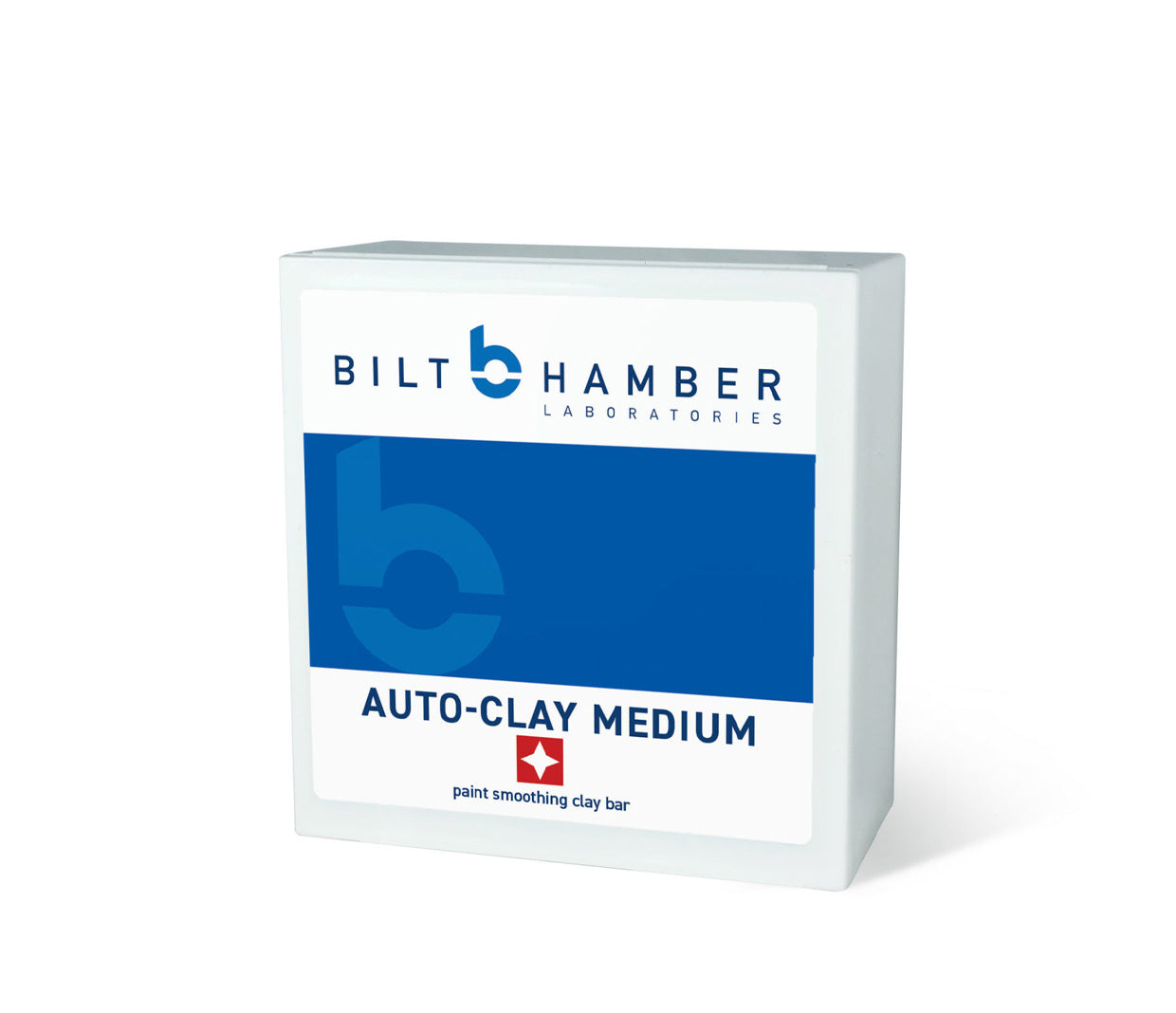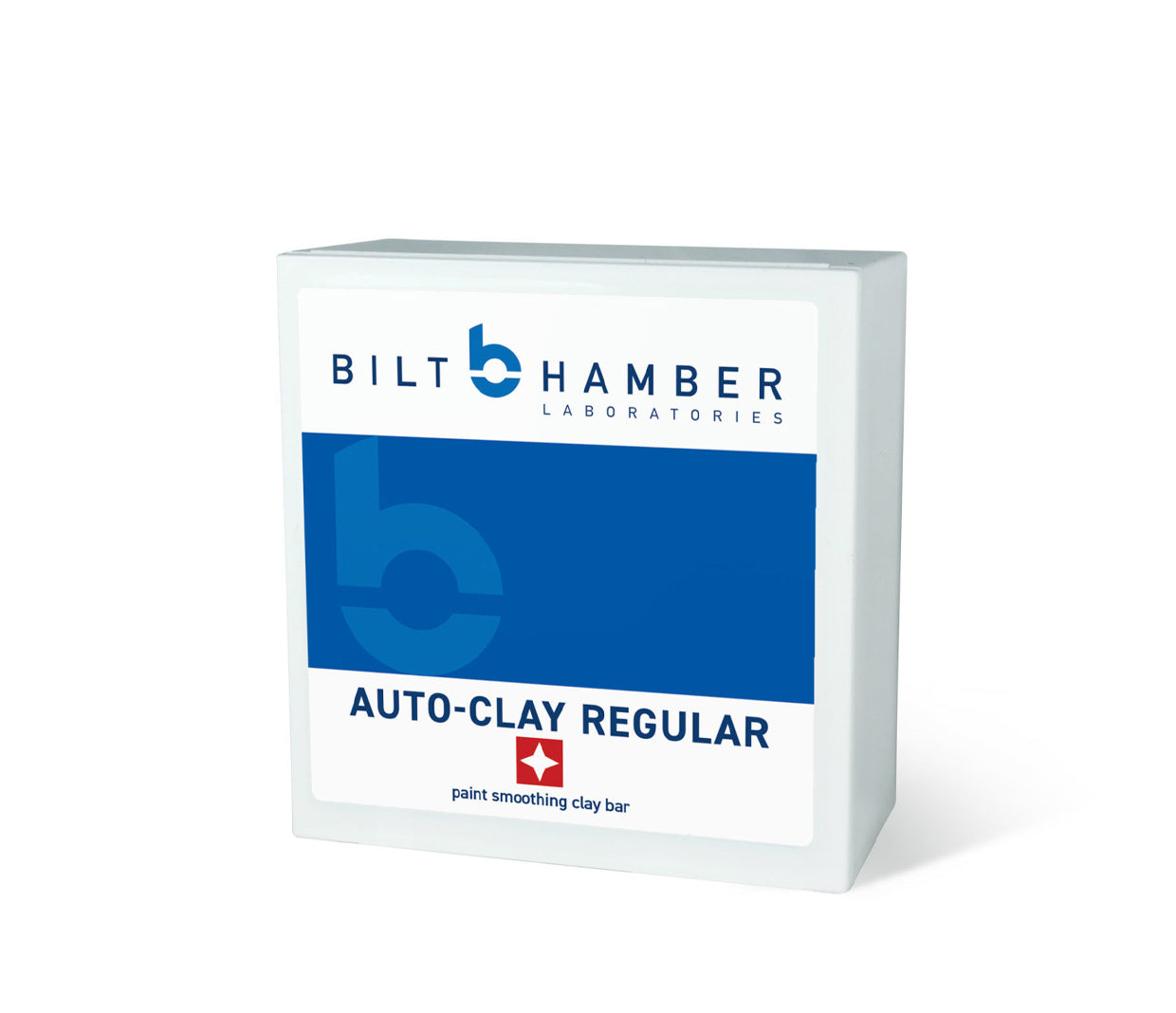
We Say
Bilt Hamber auto-clay is an award-winning clay bar available in three different grades (regular, medium and soft), all of which are very good at removing stubbornly bonded surface contaminants such as industrial fallout, paint overspray and metal filings. Although all three grades are relatively smooth textured and technically contain the same concentration of abrasives, their different levels of elasticity results in them varying slightly in abrasive strength. The regular grade is very firm and relatively more abrasive, which makes it ideal for use in hot weather (when other clay bars can become too soft to be effective) and for vehicles that have been neglected or never clayed before. The medium grade is softer and easier to fold, which makes it ideal for normal claying duties on cars that are reasonably well-maintained. The soft grade is much softer and relatively less abrasive, which makes it ideal for use in cold weather (when other clay bars can become too stiff to use safely) and for vehicles that are pampered regularly.
Key Features
Description
Specification
| Construction | Polybutene resin |
|---|---|
| Net Weight | 200 g |
| Removes Inorganic Contaminants | Yes |
| Removes Organic Contaminants | Yes |
| Strips Coatings | No |
| Strips Sealants And Waxes | Yes (partially) |
How To Use
Bilt Hamber auto-clay is designed to work optimally with water, although a dedicated clay lubricant may also be used. Before use, divide the clay into several pieces and soften them up in a bowl of warm water. When you are ready to start (after washing and rinsing your car normally, and then treating the bodywork and glass with tar and iron removers), take out one of the pieces and mould it into a patty shape. Next, soak the first surface to be treated with water or a dedicated clay lubricant and, using light pressure, begin rubbing the clay over it in straight lines in all directions. Initially you may feel some resistance (as the clay encounters residual contaminants), but this will gradually ease until the clay glides freely, indicating that the contaminants have been fully removed. Swap the piece of clay after each panel or window (to ensure you are always working with a soft piece) and repeat these steps until all of the bodywork and glass is done. Finally, either foam or wash the car again, and then rinse it thoroughly and dry off. Note that if you drop a piece of clay at any point you must immediately discard it, otherwise you run the risk of damaging your car.



